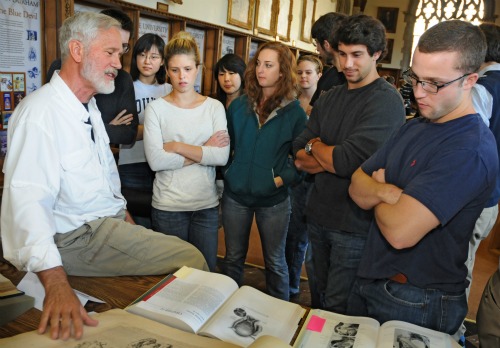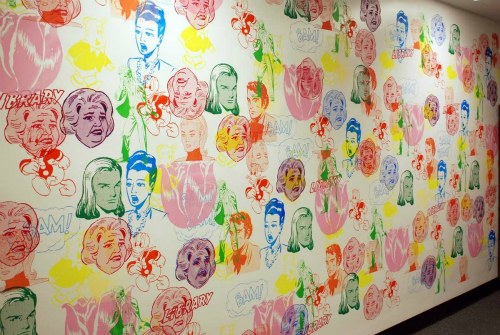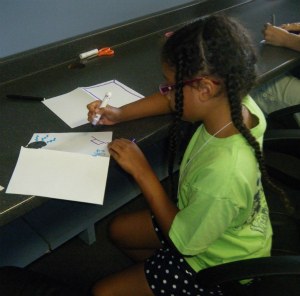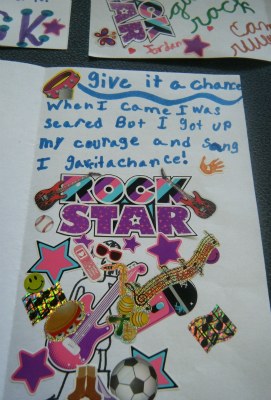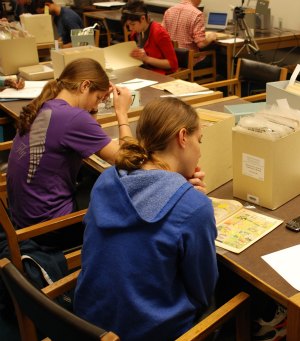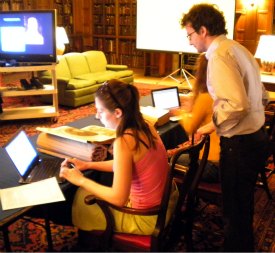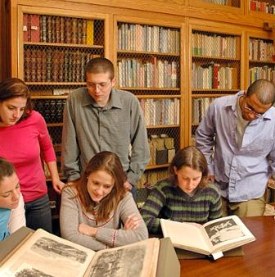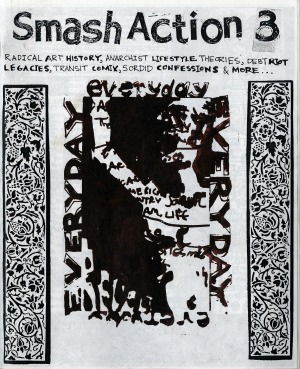 Dwayne Dixon, a graduate student in cultural anthropology at Duke, recently donated a treasure trove of new titles to the his zine collection, part of the Sallie Bingham Center for Women’s History and Culture.
Dwayne Dixon, a graduate student in cultural anthropology at Duke, recently donated a treasure trove of new titles to the his zine collection, part of the Sallie Bingham Center for Women’s History and Culture.
Dixon wrote in an email to Bingham Center archivists:
While DJing a party last night at a professor’s house, I was told by a faculty member in the Music Dept that my zine collection was being used by a grad instructor teaching a course on punk history. I was so thrilled, as you can imagine, and it inspired me to unbox the last treasured horde of zines. I must confess I held the best in reserve in my initial donation. I have approx. 68 zines that are aesthetically, politically, and creatively rich. Hand-screened covers, some of the best zine writing ever, and incendiary politics that changed my life. I want others to be moved, too—by Mimi Nguyen’s Slander zine, by [anonymous’] Quiet Nights of Quiet Stars zine, by the dense tangle of punk and race and gender and a changing America of the last 2 decades.
As Dixon mentions in his note, classes frequently use zines as a resource for learning. As with any other historical manuscript or artifact, zines help illuminate specific aspects of culture through their method of creation and their content. Zine authors use the freedom of the medium to confront important cultural issues as well as to divulge their own reflections and emotions. The handmade nature of zines also allows for more artistic presentations of information, creating visually engaging objects that also serve as reading material.
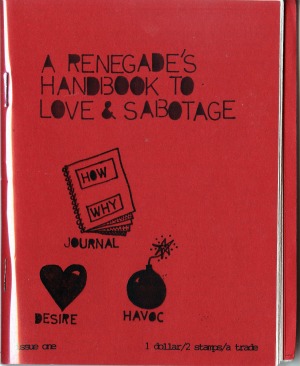 While zine culture still exists in a variety of vibrant formats, the movement was at its most powerful from the late 1980’s to the mid-1990’s. During that time, Dixon snapped up a great number of these publications and eventually gifted them to the Bingham Center in 2001 with an initial donation of over a hundred zines. Including the latest addition, the Dixon collection now contains almost two hundred zines chronicling topics such as body image, depression, politics, racial inequality, history, and personal exploration.
While zine culture still exists in a variety of vibrant formats, the movement was at its most powerful from the late 1980’s to the mid-1990’s. During that time, Dixon snapped up a great number of these publications and eventually gifted them to the Bingham Center in 2001 with an initial donation of over a hundred zines. Including the latest addition, the Dixon collection now contains almost two hundred zines chronicling topics such as body image, depression, politics, racial inequality, history, and personal exploration.
The new addition has been added to the finding aid and is now available for research. Come take a look!
Post contributed by Rosemary K. J. Davis, Bingham Center volunteer.


